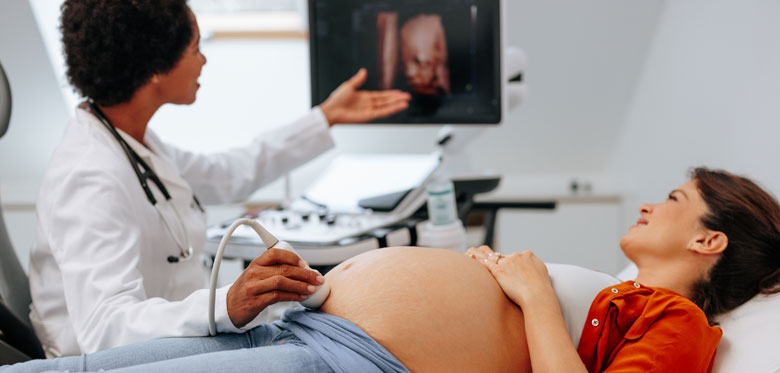Pregnant women in the UK will generally have a dating scan at 12 weeks followed by a further anomaly scan at 20 weeks. They may have more scans if there are concerns over the baby’s or the mother’s health.
Recent research however has suggested that a third scan at 36 weeks could reduce unexpected breech births by around 70%. Breech births occur when a baby is born bottom or feet first. This currently happens in around 4% of births.
If a breech presentation is detected using a third scan at 36 weeks then this would enable non-surgical attempts to be made to turn the baby into a head down position, allowing for a vaginal birth.
An unexpected breech birth can carry increased risks for a vaginal delivery such as a situation where the baby’s oxygen supply through the umbilical cord is cut off, the baby’s head can become stuck in the birth canal, or birth asphyxia can occur if there is a delay in delivery.
Professor Asma Khalil, in charge of the research study has said "The two routine scans are far too early to tell us how the baby will be positioned at the time of labour and that's why a third scan at 36-37 weeks could be a game-changer to pregnancy and birth care…For the first time we’ve shown that just one extra scan could save mothers-to-be from trauma, an emergency C-section, and their babies from having severe health complications which could otherwise have been prevented.”
The research was published following different third trimester scans being introduced at St George’s University Hospital NHS Foundation Trust and Norfolk and Norwich University Hospital NHS Foundation Trust. At the former hospital trust, 7,351 women were given an extra ultrasound scan by a sonographer at 36 weeks.16,777 received the usual two scans only. At the latter hospital trust, 4,575 women were given an extra scan with a portable device. 5,119 women received the usual two scans only. The study staggeringly reduced the number of unexpected breech births by 71% using the standard ultrasound and by 69% using the handheld device.
Babies whose mothers had been given a third scan were also 16% less likely to be admitted to a neonatal unit for closer monitoring and were 40-77% less likely to have a low Apgar score after birth. The Apgar score is used to assess a baby’s health at one and five minutes after birth and after resuscitation.
Given the recent concerns around the safety of NHS maternity services, this could be one way to avoid mother and baby being put at unnecessary risk. Whether it will become standard practice remains to be seen.
If you or a loved one has suffered an injury due to the negligence of a medical or health professional, including birth injuries, then we may be able to help you pursue a claim for compensation. Our leading team of experts are on hand to offer advice, so please get in touch with us on 0161 696 6165 or complete our online enquiry form and we will contact you directly.




Comments